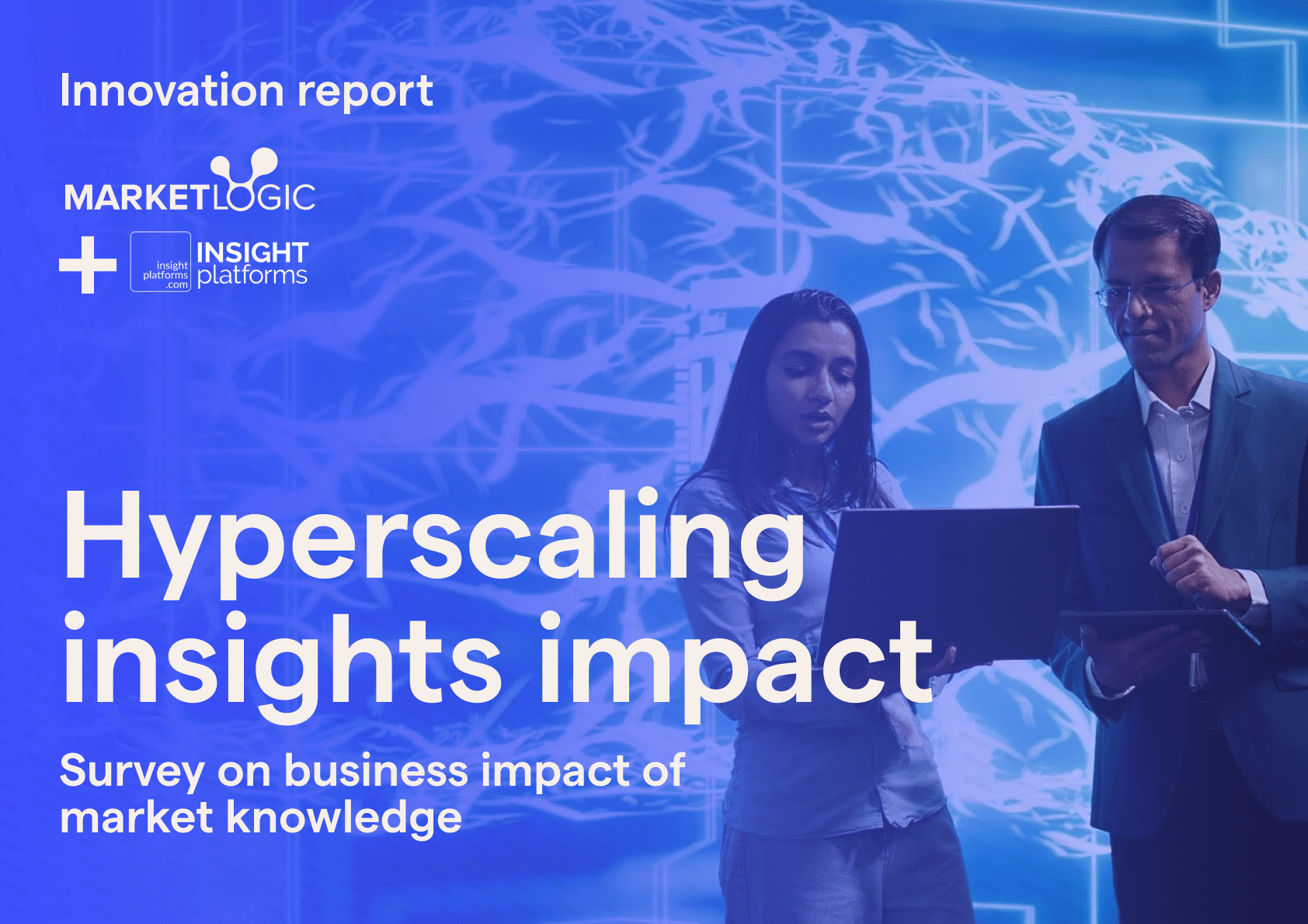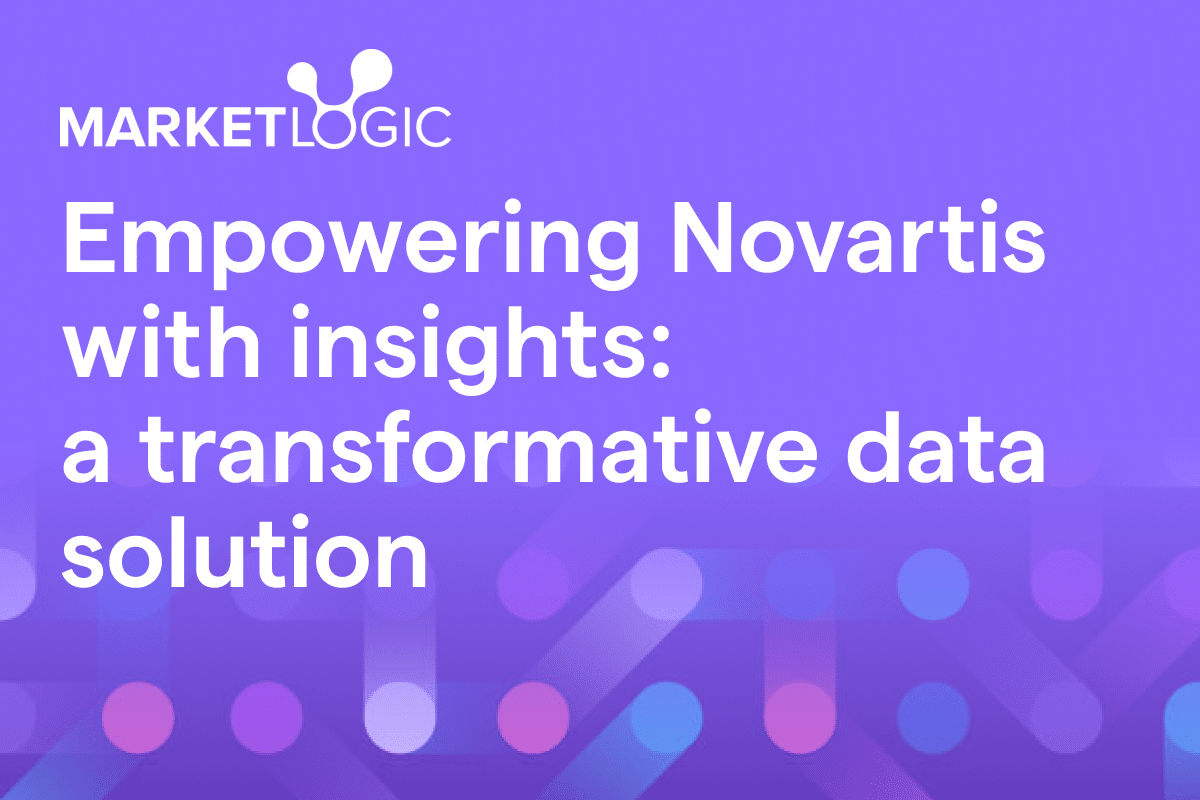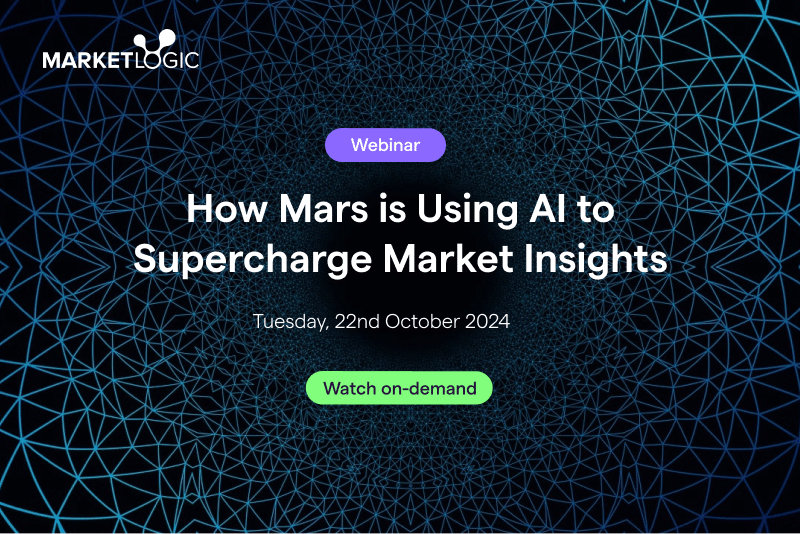In today’s rapidly evolving business landscape, staying ahead requires more than just data—it demands actionable insights that drive decisions and shape strategies. And yet, our latest innovation report “Hyperscaling insights impact with AI” reveals there is still a significant disconnect in organizations between the demand for insights and their practical application in decision-making.
We’ve consulted five leading experts who are at the forefront of innovation in this space on how AI, data, and organizational insights are reshaping the industry, and catch their tips for organizations to close the gap between knowledge and application. Their perspectives provide a comprehensive view of the key learnings from the past year and offer a forward-looking lens into future insights trends. Harness these expert perspectives, tips, and predicitons to help inform your strategy for 2025 and beyond.
Meet the experts:
Luc Rooms, Center of Excellence Lead for Market Intelligence, Proximus
Luc Rooms is Center of Excellence Lead for Market Intelligence at Proximus. After fulfilling strategy consulting, strategic planning, and business development functions, Luc moved to the market intelligence team. His team is responsible for monitoring market and competition dynamics, next to developing knowledge management capabilities of the company. Luc is a member of several international market intelligence benchmarking initiatives. Luc holds a Master in Communication Sciences, next to two post-university degrees in sports management.

The insights gap: Our latest survey report shows there is a major gap between appetite for insights and application of this knowledge in decision-making: Only 60% of product and marketing decisions are informed by consumer data and insights today although business leaders say they want to increase this significantly. What do you think are the main barriers to increased use of insights in decision-making, and what is your number one tip for organizations to close this insights gap?
Luc: Increasing awareness of the existence of insights, along with ensuring easy access, is an obvious but common barrier. Insights teams should develop a kind of ‘marketing plan’ to identify their target audiences, select the right communication platforms, and tailor messages to different stakeholders. At Proximus, we combine a push and pull approach: key insights are proactively shared with internal target groups, while all insights (including historical research) can also be accessed in a self-service modus through an online platform. Additionally, fostering a company-wide culture of data-driven decision-making helps stimulate the use of insights.
Tips for closing the insights gap include detecting your core customers and systematically onboarding new decision-makers within the company to get them up to speed from the start. On the output side, the combination of consumer, market and competitor insights enrich the internal customer experience to get a cross-fertilized 360-degree view on topics.”
Driving ROI and scaling insights impact across the enterprise: The majority of executives believe that having access to easy, quick access to consumer insights could deliver big business benefits. Survey respondents predicted they would save time and money, improve product launch success, and create better advertising. How are you calculating the business impact and ROI of your insights program?
Luc: We opt for a combination of quantitative and qualitative measures to evaluate the ROI of insights. In terms of figures, common quantitative metrics include insights platform statistics on different levels, per target group, to measure reach. Additionally, we conduct an annual internal satisfaction survey to gather qualitative metrics, such as satisfaction, added value, and impact. For specific requests — provided via reports, meetings, or workshops — we also ask for explicit feedback.
While we do not calculate ROI for individual business projects, as isolating the impact of insights within a broader context is challenging, our focus is on providing actionable insights to both top management (for strategic topics) and middle management (as they are often at the basis of creating recommendations) with the needed insights — to ensure informed decision-making support.
Key learnings: Adoption of AI has surged in 2024. Looking back over the year, what key challenges did you encounter when introducing AI for market insights, and how did you tackle them?
Luc: Throughout 2024, like many others, we were bombarded with AI tools promising to transform our professional lives. The key challenge consisted of selecting some relevant use cases with the highest potential incremental impact. Within these use cases, creating trust in the proposed solutions is key. As an insights team, we are considered as a trusted and reliable source, and no AI tool can put this at stake. Therefore, we have been extensively testing different solutions in the fields of intelligent scraping, summarizing, desk research and generative (gen) AI for our insights platform. Step by step, we are integrating different tools in our way of working, still very conscious of potential challenges along the way.
Trend predictions: When looking ahead to 2025, where do you anticipate AI will have the greatest impact within the insights function and why? Productivity of the insights team, innovation in how to compile fresh insights, quality of insights, or something else?
Luc: Next to a continuous quest to increase efficiency through new AI tools, we expect the biggest impact to come from the prompting capabilities of our insights platform. Being able to search in a ChatGPT/Microsoft Copilot-like way, on a controlled set of sources, is a potential game-changer for our internal customers.
Getting off-the-shelf answers for targeted questions based on trusted sources serves two goals: increased customer satisfaction, as well as freeing up more time for the insights experts — leading to more in-depth analysis on strategic topics and scope extension. As mentioned earlier, the key success factor lies in the reliability of the answers.”
Until this doesn’t reach 100%, customers will not be reassured. As trusted advisors within the company, we cannot settle for compromises here.
Finally, 2025 will undoubtedly introduce a wave of new, sophisticated AI applications. Filtering the most effective tools with our customers and efficiency improvements in mind, will surely be an ongoing but exciting challenge.
Joseph Pisari, Knowledge Management Team Lead, Novartis
Joseph Pisari leads knowledge management and business transformation programs at Novartis. His focus is on building award-winning teams and solutions and on driving quantifiable business impact and value for the organization.

The insights gap: I think some of the key barriers to making use of market research are:
- The volume,
- The relevancy,
- The quality of that content.
We need to able to find the needle in the haystack, synthesize information, and extract what’s really valuable. Only then will you be able to apply whatever the insight is to the decision-making process. If your decision-making process starts with: “Here’s all the information that we have,” then you’re going to quickly ignore it in order to stick to your timeline: you risk prioritizing a quick decision over an informed decision.
So, my top tip is to be intentional about decision-making. How? When making decisions, understand the reasons behind your decision. If you want to make decisions that are more insights- and data-driven, then make that a requirement of your decision-making process, and incorporate it as a standard element of your workflow: e.g. if a decision doesn’t have data supporting it, then you can’t go forward with that decision in your organization. That’s what I mean by intentionality.”
Lastly, work toward quantifying the impact of those insights and decisions. Where you can measure, you can improve. This applies to as much to the insights generation process as it does to the decision-making process itself. With impact data points, you can identify patterns of success outcomes and integrate those best practices into your ways of working.
Driving ROI and scaling insights impact across the enterprise: At Novartis, we’re looking at market research and insights within the wider context of the commercial organization – and so we’re bringing together a broad set of information under a holistic knowledge management strategy. Our focus is on the management of all this knowledge to 1) help reduce spend (by making it easier to find and (re-)use existing knowledge and insights than to re-create or re-commission them, 2) improve speed to answer (how long it takes an associate to get the info they need) and improve time to insight (how long the entire insight development lifecycle takes), and 3) reduce overall cost of managing and maintaining this knowledge (e.g. through centralization, standardization and optimization).
These measurements—efficiency, and productivity—speak to the money-saving side of the story. On the money-making side of things, we’re then trying to understand, and measure, the value of insights-informed decisions. And I wouldn’t say we have a standardized way of calculating that yet. Instead, we look at how we calculate the value of the business question we’re trying to answer and then ask: “Could we have answered that better with a different, or faster, insight” and “What has that decision helped the business to achieve”? We look along the lifecycle of the knowledge: how we gather research, how that research is synthesized into an insight, how that insight is used to inform a decision, and then what that decision delivered in terms of business impact. So it’s a little bit different than measuring the ROI of the insight alone, and rather about the ROI of the insight as part of the decision-making process.
Key learnings: When introducing AI into our solution, we faced (constructive!) challenges from different parts of the organization, including Insights, Legal, and Risk teams. These groups were concerned with trustability, reliability, relevancy, and compliance.
For Insights teams in particular, the challenge was also how to make use of the AI and incorporate it into their ways of working. Insights teams wanted to know and understand that this was going to be a tool for them, not a tool to replace them. They wanted to know: “Can we trust it? Is it reliable? How does this work for me?”.
As for the Legal and Ethics teams, they wanted to know that we weren’t creating an engine of chaos, so to speak, but rather this was going to be highly trustworthy information and that the organization was going to know how to use it appropriately.
So how did we address those challenges?
- Governance: Making sure that we had good, appropriate, trustworthy, and compliant knowledge going into the AI so that we have relevant and accurate answers coming out of the AI.
- Change management: Understanding this was about behavior change more so than technology change. We did a lot of piloting and testing with actual users and created targeted case studies looking at how the relevant teams could use the AI to make their jobs easier. We also developed a champions network and sought leadership endorsement around the organization to start the domino effect of adoption.
- Target tech: Lastly, gearing the technology itself to the specific business requirements and use cases. DeepSights, which is the AI for insights we use, has a built-in validation loop; all the answers are referenced back to the (approved) source content; and “watchouts” help prompt users to think a little bit more robustly about the answer the AI returns. Those are all quality-life features for the user, but those are also things that help garner endorsement from stakeholders Legal and Risk: they can see that AI isn’t just going to generate chaos and understand that this technology is actually robust in how it comes up with an answer.
So, in summary, we tackled challenges with good governance, change strategy, and the technology features themselves.
Trend predictions: To keep it focused on the insights function, trends will be around productivity measures: being able to do things better and faster. But also, quality and robustness, that’s where I see it really taking root.
It’s not just about getting an answer faster — it’s about getting a higher-quality answer faster and one that drives real business impact. And this relies not just on the technology itself and asking a question and getting an answer, but more so on incorporating it intentionally and intelligently into the insights workflow. It’s not about a tool, it’s about a change in ways of working.”
It’s about all those micro questions that you have throughout the process of creating an insight — refining as you go, discovering hidden relationships, and uncovering angles that might not be self-evident at first. Insights teams have a lot of information to work with – so it’s more about integrating tools like AI into the workflow along the way rather than looking at them as the endpoint.
Seth Minsk, Senior Director of Global Insights and Analytics, Perrigo
Seth Minsk is Senior Director of Global Insights and Analytics at Perrigo. He has over 20 years’ experience in insights, analytics, and marketing in the consumer healthcare industry. He has deep expertise in putting the consumer at the center of brand and innovation strategy.

The insights gap: So much consumer knowledge is trapped inside reports, spreadsheets and datasets, as well as in the minds of the insights teams. It’s impossible for Insights leaders to be everywhere at once, involved in every conversation. We can’t answer the questions that don’t come to us.
So we, as insights teams need to be intentional about planning communications and engagement strategies, to maximize limited resources of people and time, as well as the ability to reach the entire organization to inspire consumer-centric decision-making while considering three groups of stakeholders:
1. The ones we partner directly with and who get the bulk of our time,
2. People who can access insights self-service, using tools that we build that can impart the Insights POV and frameworks for understanding our customer, even when we are not directly in the conversation,
3. The rest of the organization, who won’t engage with insights on a daily basis, for whom we need to design engaging visuals and video-heavy Insights content.
Driving ROI and scaling insights impact across the enterprise:
We do not explicitly measure ROI of insights spend. Instead, we measure the impact of Insights qualitatively (qual) whether the organization feels it has the guidance it needs to run the business, and quantitatively (quant) by the value of the business initiatives that are driven by insights.”
Key learnings: In the first year of the gen AI boom, the challenge was that we could see the promise of what was to come, but commercial applications from research vendors were not yet available. Fast forward to now, and there is an overload of tools and approaches to sort through, and some AI tools overlap across capabilities.
Partnering with internal IT is crucial for helping validate new tools and understanding what might already be available in the organization’s tech stack. Having a clear roadmap for what capabilities are needed helps avoid a profusion of tools and pilots that might be interesting but don’t ultimately impact the business.”
Trend predictions:
- AI will continue to touch all aspects of an Insights team’s operations.
- Insights professionals will be able to swiftly navigate and mine their decks, raw data, online data, and video to find data – and mine new insights.
- Conversational research at scale will continue to blur the lines between qual and quant.
- The first three years of generative AI have been about doing things we’ve always done and making them better and more efficient.
In 2025, I expect to start seeing totally new modalities for understanding consumers enabled by AI. Synthetic respondents have been the first application, but new approaches will start to totally change the way we do insights.”
- The role of custom research will begin to evolve. Rather than commissioning research to answer questions, increasingly, we will be able to mine existing learnings or use synthetic sample, agents, and avatars that we can have a conversation with. The role of custom research in the future will be to generate data to add new capabilities to our Large Language Models (LLMs) and other gen AI models. So, research will be conducted to keep our models up-to-date and refreshed, and add new capabilities rather than directly answering business questions.
- And I’m excited about new tools that will make it easy to create deliverables that will let us quickly and easily tell our customers’ stories in an engaging way.
Simon Atkinson, Chief Knowledge Officer, Ipsos Group
Simon Atkinson is the Chief Knowledge Officer for the Ipsos Group, where he works with teams around the world to bring analysis of the latest consumer trends and business themes to Ipsos’ clients. He is a former Assistant Chief Executive at Ipsos MORI where his previous roles have included spells as head of social research and director of its political polling practice. In the field of social research, he has worked widely with our local government clients over the years, including conducting several studies for Havering.

The insights gap: One perennial barrier is that the insights may be out of sight and therefore out of mind.
Organizations need to be ever vigilant at pushing ‘what you need to know’ at the relevant audience. My top tip is to really try to sell the story – for example the KPI may not have changed in the last year, but that doesn’t mean it isn’t interesting.”
Driving ROI and scaling insights impact across the enterprise: We are really trying to push ourselves to look at the outcomes rather than the outputs, making sure we focus on what it was that made a genuine difference to the client. The qualitative metrics are just as important as the quantitative ones!
Key learnings: One large organization’s AI is probably as good as another large organization’s AI, so we have to be clear with ourselves that research is all about the actual humans using their experience to make sense of it all.
We’ve found that we needed some guardrails along the way – we’ve been using our Truth, Transparency, Trust framework to help us identify, evaluate, and monitor potential risks.”
Trend predictions: The techniques used to gather insights have always been evolving, but each is now having more regular reviews as to how AI can further boost their effectiveness. Within the actual insights function, its summarizing and synthesizing potential is likely to accelerate further – as well as its ability to go away and do tasks on its own.
Mike Stevens, Founder & Editor, Insight Platforms
To round off our expert insights roundup we asked Mike Stevens, Editor of Insight Platforms, – who co-produced our recent “Hyperscaling insights impact with AI” innovation report – to weigh in on the market insights trends.
Mike Stevens is a leading consultant, advisor, and writer at the intersection of technology, research, and analytics. He has 20 years’ experience in insight, software, and consulting firms including Vision Critical, where he led the EMEA region; and Kantar, where he managed regional business units and global accounts.
In 2018 he founded Insight Platforms, a leading directory and knowledge hub for user research, consumer insight, and data analytics software and solutions. He also helps client teams and agencies to build capability, adopt technology, and implement process change.

The insights gap: We’ve established – in two substantial surveys (in 2024 and 2023) – that there is an enormous appetite for market insights and consumer data to support decision-making in organizations. But there’s clearly a challenge in using those insights at the point of decision-making.
I think there are three main factors behind this gap:
- Speed of decision-making: In many cases, marketing, product, and other stakeholder teams move at such speed that they don’t feel able to incorporate consumer evidence into decisions
- Bottlenecks in expert teams: CMI and analytics departments are over-run with stakeholder demand that just keeps growing
- Technological barriers: data is in so many disparate systems and formats that it can be hard to access information in the right structures at the right time.
Of these three issues, the most recent survey clearly highlighted technology and data fragmentation as the biggest hurdle to overcome.
My number one tip for organizations would be to start framing all market insights and intelligence as a data asset that accumulates greater value over time and delivers increasing returns on investment as more data sources are connected. Shifting the philosophy from projects and tools to a data asset mentality is the most important first step in planning for improved technology, data, and human processes to close the insights gap.”
Key learnings: I’ll answer this from an industry perspective. It’s always easier for technology companies to create solutions than it is for enterprise organizations to deploy them.
The Golden Triangle of Transformation has three sides, only one of which is technology. The other two are about people and processes. These two sides that are particularly challenging when adopting AI because of the potential for radically changed business processes and the shift in mentality and skill sets amongst the people expected to use it.
The three biggest challenges I see in enterprise organizations when introducing AI for market insights are:
- Navigating the sheer volume of solutions and claims in the market. This is an era of Cambrian explosion in AI tools – and it’s hard to distinguish genuine advantages and features amongst all the noise.
- Building skills and an AI-focused culture both in insights teams and marketing/product groups.
- Reengineering existing processes to suit the new ways of working enabled by AI.
Trend predictions: AI is going to further turbocharge the demand for insights and data in organizations. This has a number of big implications for the insights function:
- The volume of insights projects will continue to increase significantly. AI is to insights what a large highway is to traffic. The economic principle of induced demand says that increased capacity leads to increased usage. Insights teams will have to adapt their delivery model, skill set, and toolbox to better support this growing demand from their stakeholders.”
A second big trend will be the changing nature of market insights and data. Where historically, insights departments were focused on primary data (surveys, qualitative research) managed by a broad set of expert agencies, this type of data will be a shrinking share of the total volume managed by insights teams. Secondary Data Sources will continue to proliferate, and the key role of insights analysts and consultants will be to parse multiple sources of data into a coherent story to advise their stakeholders.”
- Finally, AI will accelerate the transition of insights professionals into one of two broad categories:
- The first will resemble strategy consulting skills much more: the ability to distill data sources into commercially impactful recommendations.
- The second will be more data- and technology-focused as insights teams ‘in-house’ more research and analytics activity, and transition to ‘data asset managers’.
Learn more about the latest knowledge management trends across research, data, and insights – download our “Hyperscaling insights impact with AI” innovation report now.
Want to keep up with real-time changes required by the market and become more insights-driven as an organization? Explore how DeepSights can help – book a demo today.








